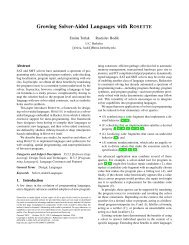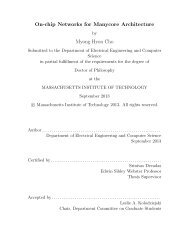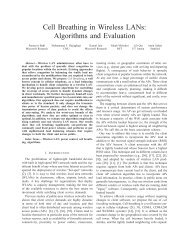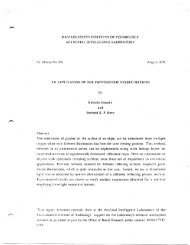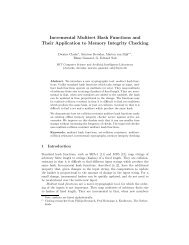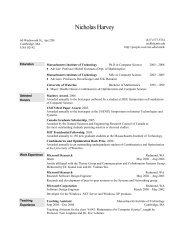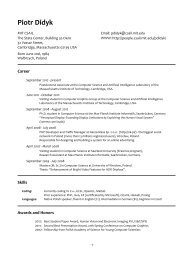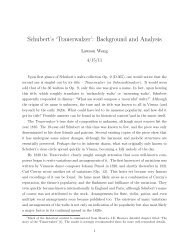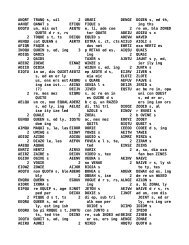Prism User's Guide - CSAIL People - MIT
Prism User's Guide - CSAIL People - MIT
Prism User's Guide - CSAIL People - MIT
You also want an ePaper? Increase the reach of your titles
YUMPU automatically turns print PDFs into web optimized ePapers that Google loves.
114 <strong>Prism</strong> User <strong>Guide</strong><br />
1. Which of the two subsystems that <strong>Prism</strong> measures does the program<br />
use more heavily? For example, if total serial-subsystem time is greater<br />
than total parallel-subsystem time, then reducing the use of the serial<br />
subsystem is likely to provide the greatest performance gains. Reducing<br />
the use of the parallel subsystem may improve performance, but you may<br />
also find that it will have no effect on performance, since the use takes<br />
place at the same time that the serial subsystem is also in operation.<br />
2. Which resource within this subsystem has the highest usage? If your<br />
program uses the parallel subsystem more heavily than the serial subsystem,<br />
and Send/Get communication is the most-used parallel-subsystem<br />
resource, then you will obtain the greatest performance gains by reducing<br />
the use of this resource.<br />
3. Which procedure uses this resource most heavily? This tells you<br />
where you will have the biggest payoff when attempting to reduce the<br />
use of the most heavily used resource.<br />
4. Which source lines within this procedure use this resource most<br />
heavily? Finally, goinR to the source-line level isolates the svecific lines<br />
of code that have the greatest effect on performance.<br />
Here is an example of a report from the performance advisor (for a CM-2 or<br />
CM-200). Note that it does not include source-line information, because the mostused<br />
resource is FE cpu (user), for which source-line data is unavailable.<br />
Of the two subsystems that <strong>Prism</strong> currently measures,<br />
your program makes greater use of the front end.<br />
Within that subsystem, your program makes the greatest<br />
use of the "FE cpu (user)" resource, having kept it busy<br />
71% of the total elapsed time.<br />
Procedure complexarray, called from floatarray, called<br />
from MAIN, makes the greatest use of the "FE cpu (user)"<br />
resource, having kept it busy 69% of the elapsed time.<br />
Note that when you first display data for a program, by default the Performance<br />
Data window displays the most-used resource and the procedure that uses this<br />
resource the most; this helps you analyze your data without having to use the<br />
performance advisor.<br />
Version 1.2, March 1993<br />
Copyright 0 1993 Thinking Machines Corporation<br />
i.I<br />
r



